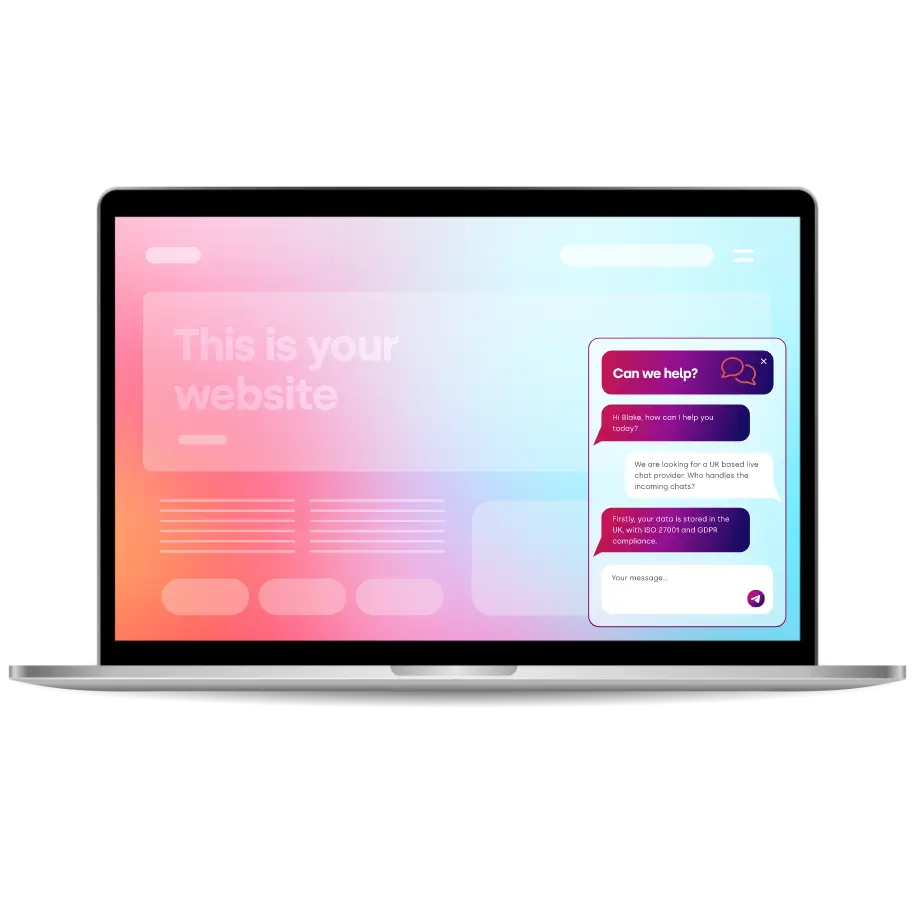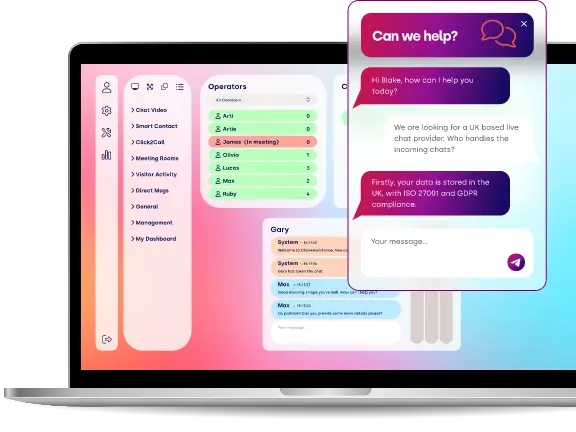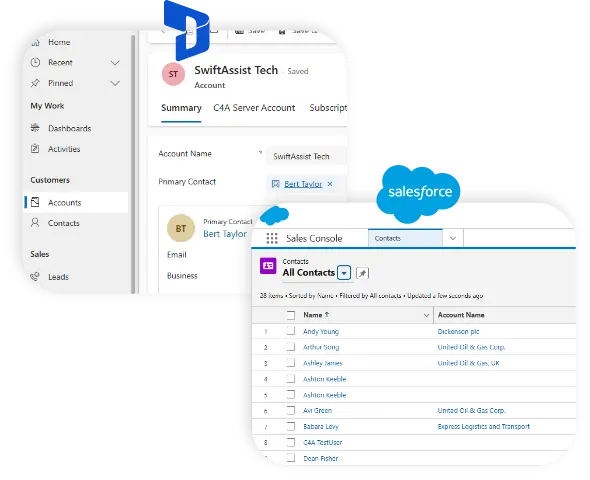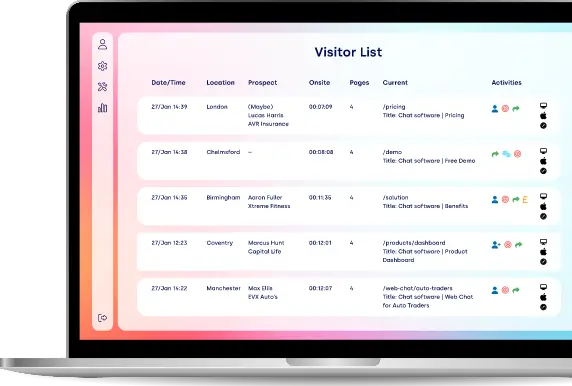The Ultimate Guide to Automated Customer Service in 2025
Automating customer service allows companies to react quickly and improve customer satisfaction, thus having an advantage using AI, chatbots and self-service options for a smoother experience.

As companies become more aware of the benefits of automation, a growing number are investigating ways to build a chatbot for customer service and support, aiming to improve customer interactions and optimise support workflows.
Equally crucial is the integration of chatbots, which guarantees that your chatbot operates smoothly with current systems such as CRMs, ticketing platforms, and analytics tools.
By merging careful development with effective integration, businesses can enhance efficiency, boost customer satisfaction, and deliver a seamless, consistent support experience.
Automated customer service has swiftly changed the way companies engage with their customers, offering quicker, more effective, and scalable support options. In the current fast-moving digital landscape, customers demand immediate responses, smooth interactions, and uniform experiences across all platforms. Fulfilling these demands manually can be expensive and sluggish, which is why automation has become a fundamental aspect of contemporary customer service strategies.
From AI-driven chatbots that manage numerous enquiries at once to self-service portals that enable customers to resolve their own issues, automated systems shorten response times and allow human agents to concentrate on more intricate problems.
Businesses in various sectors - retail, banking, healthcare, telecommunications, and beyond - are embracing these solutions not only to cut costs but also to enhance the overall customer experience.
The advantages of automated customer service extend beyond just operational efficiency. Companies can offer round-the-clock support, minimise human errors, gather valuable customer insights, and even boost revenue through proactive engagement and lead generation. For instance, a retail chatbot can recommend complementary products during a customer enquiry, while a bank’s IVR system can provide tailored financial advice based on transaction history.
This article is designed to be your comprehensive guide to automated customer service. We will delve into its definition, the technologies involved, the benefits, types of solutions, implementation strategies, best practices, and the emerging trends that are shaping the future of customer support. By the conclusion of this guide, you will have a solid understanding of how to utilise automation to improve efficiency, customer satisfaction, and business growth.
What is Automated Customer Service?
Automated customer service refers to the utilisation of technology to handle customer interactions without the need for direct human agent involvement. Rather than enduring long wait times or having to repeat information to various representatives, customers can receive prompt and consistent responses from intelligent systems designed to comprehend and address their needs.
Technologies Involved
A variety of technologies drive automated customer service, each fulfilling distinct roles:
- Chatbots - These are software applications that mimic human conversation to respond to enquiries, assist users, or finalise transactions. They can be either rule-based (reacting to set queries) or powered by AI (learning and evolving from interactions).
- Self-Service Portals - These are online platforms, FAQs, or knowledge bases that enable customers to resolve issues independently, decreasing ticket volume and empowering users.
- Interactive Voice Response (IVR) Systems - These are telephone systems that utilise prerecorded messages or AI to guide customers to the appropriate department or automatically provide information.
- Email Automation - These are tools that deliver immediate responses to customer questions or direct emails to the correct teams, ensuring prompt follow-up.
Industry Applications
Automated customer service is now integrated into almost every sector:
- Retail: AI chatbots assist shoppers in tracking orders, locating products, and receiving personalised suggestions in real-time.
- Banking and Finance: IVR systems offer balance updates, while chatbots help users navigate loan applications or card services.
- Healthcare: Patient portals facilitate appointment scheduling, prescription refills, and basic medical advice without the need to wait for human staff.
- Travel and Hospitality: Automated systems manage bookings, send check-in reminders, and provide flight updates to guarantee a seamless customer experience. By integrating these technologies, businesses establish service environments that are not only quicker but also scalable - able to accommodate thousands of customers at once without compromising quality.
Benefits of Automated Customer Service
Automated customer service offers much more than mere convenience - it has the potential to fundamentally change how organisations engage with their customers, optimise operations, and create tangible business value. By substituting or enhancing manual processes with intelligent systems, companies can boost response times, lower costs, and improve the overall customer experience.
- 24/7 Availability
In contrast to human agents, automated systems are always awake. Chatbots and self-service portals deliver immediate assistance at any hour, accommodating various time zones and languages. For instance, an e-commerce company can promptly confirm orders or handle returns even outside regular business hours, ensuring that customers receive reliable support.
- Reduced Costs
By automatically managing repetitive enquiries and straightforward tasks, businesses can greatly lower operational costs. AI-driven customer service platforms reduce the necessity for large support teams while preserving or even enhancing service quality. As noted by Doo, companies that invest in customer service automation can reduce service costs by as much as 30%.
- Improved Efficiency
Automated solutions remove delays associated with manual ticket routing or repetitive troubleshooting. For example, an Interactive Voice Response (IVR) system can quickly direct callers to the appropriate department, while a chatbot can address frequently asked questions without the need for human involvement. This efficiency not only speeds up problem resolution but also allows human agents to concentrate on more complex or high-value tasks.
- Increased Customer Satisfaction
Quicker response times and consistent answers result in more satisfied customers. When customers can resolve issues swiftly - through self-service knowledge bases or AI chatbots - they view the brand as responsive and trustworthy. This favourable experience leads to greater loyalty and repeat business.
- Lead Generation and Revenue Opportunities
Automated systems are not limited to support functions - they can also propel growth. Chatbots have the ability to interact with website visitors, gather their contact details, qualify leads, and suggest pertinent products. For example, an AI assistant on a SaaS platform might help potential customers navigate pricing options and link them to sales representatives when necessary.
By leveraging these advantages, automated customer service evolves beyond a mere support mechanism - it transforms into a strategic asset that enhances customer relationships and boosts a company’s profitability.
Research from Gartner shows that organisation implementing customer service automation often see reduced support costs, faster resolution times, and improved scalability.
Types of Automated Customer Service Solutions
Automated customer service is not a one-size-fits-all solution. Businesses can select from various options based on their size, customer requirements, and support objectives. The ideal mix of tools can foster a smooth, scalable, and tailored customer experience.
Chatbots
Chatbots rank among the most commonly utilised automated customer service tools. They engage with users in real-time via messaging applications, websites, or mobile platforms.
- Rule-Based Chatbots - These function on decision trees and set scripts. They are perfect for addressing predictable enquiries like “What are your business hours?” or “How do I reset my password?”
- AI-Powered Chatbots - These leverage natural language processing (NLP) and machine learning to grasp customer intent, deliver more adaptive responses, and evolve from interactions over time.
- Pros:
- Immediate responses for high-volume questions
- Simple to scale as the business expands
- Can be trained to qualify leads or promote products
- Cons:
- May have difficulty with intricate or atypical questions
- Needs regular updates to stay effective
Self-Service Portals
A self-service portal serves as an online centre where customers can access information, troubleshoot problems, or perform tasks independently. Examples include FAQs, product documentation, and searchable knowledge bases.
- Pros:
- Empowers customers to resolve issues independently
- Lowers ticket volume and reduces agent workload
- Accessible 24/7
- Cons:
- Demands regular content updates to maintain accuracy
- Less interactive than chat-based solutions
Interactive Voice Response (IVR) Systems
IVR systems assist callers by navigating them through menu options using either voice commands or keypad inputs. More sophisticated IVRs leverage AI-powered speech recognition to comprehend natural language requests.
- Pros:
- Effectively manages high call volumes
- Guides callers to the appropriate department without needing human assistance
- Lowers wait times and enhances call routing
- Cons:
- Poorly structured menus can lead to customer frustration
- Limited capability to address nuanced or unexpected enquiries
Email Automation
Email automation tools provide instant replies to frequent queries, acknowledge receipt of messages, or automatically direct requests to the right teams.
- Pros:
- Guarantees that no customer email is left unanswered
- Decreases response times and reduces administrative burdens
- Easily integrates with CRM systems
- Cons:
- Less interactive than chatbots or live chat options
- Still necessitates follow-up for more complex issues
By merging these solutions – like implementing AI chatbots on your website while keeping an IVR system for phone support – businesses can offer consistent and efficient service across all platforms.

See Coni the Chatbot in Action for Automotive Industries
From automotive to finance and education, our industry-tailored chatbots are designed to meet your specific needs. Discover how chatbots can enhance engagement and streamline customer experiences.
Implementing Automated Customer Service: A Comprehensive Guide
To successfully implement automated customer service, meticulous planning, strategic thinking, and continuous optimisation are essential. A well-crafted system not only enhances efficiency but also guarantees a favourable customer experience.
-
Recognising Customer Needs and Challenges
Begin by examining the most frequent customer enquiries and support obstacles. Gather data from:
- Call logs and email tickets
- Website chat interaction
- Customer surveys and feedback
By understanding which issues are reoccurring or labour-intensive, you can pinpoint where automation will be most beneficial. For instance, if customers often enquire about order tracking, a chatbot can deliver immediate updates without the need for human assistance.
-
Selecting the Appropriate Technology
Choose tools that align with your business objectives and customer requirements. Take into account:
- AI-driven chatbots for conversational assistance
- Self-service portals for knowledge-based solutions
- IVR systems for phone interactions
- Email automation for prompt replies
Assess each features, scalability, integration options, and costs to ensure that the selected solution fits within your broader customer service strategy.
-
Crafting Conversational Flows
For chatbots or IVR systems, develop intuitive and coherent conversation flows. This includes:
- Mapping out common customer journeys
- Composing clear and concise messages
- Preparing fallback responses for unforeseen enquiries
Well-designed conversations enable customers to swiftly find answers while preserving a natural, human-like interaction.
-
Integrating with Current Systems
Automation is most effective when it integrates smoothly with existing platforms such as CRM, ticketing systems, and analytics tools. Integration facilitates:
- Real-time access to customer information
- Precise issue tracking and reporting
- Personalised interactions based on past customer history
-
Testing and Refinement
Prior to full implementation, rigorously test automated systems to uncover errors or bottlenecks, Utilise metrics like:
- Response times
- Resolution rate
- Customer satisfaction scores
Continuously refine your systems using feedback and performance metrics. Frequent updates guarantee that the automation stays effective and pertinent.
By adhering to these guidelines, companies can establish automated customer service systems that boost operational efficiency, elevate customer satisfaction, and scale seamlessly as demand increases.
Best Practices for Automated Customer Service
Implementing automation is just the beginning; crafting a compelling and effective customer experience demands adherence to best practices. By following these strategies, you can ensure that your automated systems are not only efficient but also friendly to customers.
- Personalised Interactions
While automation may limit human contact, personalised interactions help customers feel appreciated. Utilise customer data to:
- Address users by their name
- Reference previous purchases or interactions
- Suggest relevant products or solutions
For instance, a retail chatbot that recalls a customer’s past order can offer customised recommendations, boosting satisfaction and encouraging repeat business.
- Provide Clear and Concise Answers
Clarity is essential. Steer clear of jargon and make sure responses are:
- Direct
- Easy to comprehend
- Relevant to the customer’s enquiry
A chatbot or self-service portal that provides accurate solutions minimizes frustration and accelerates resolution time.
- Provide Smooth Transitions to Human Agents
Automation should enhance—not substitute—human assistance. Ensure there are clear options for customers to escalate issues when:
- Queries are intricate or sensitive
- The automated systems fails to deliver a solution
Seamless transitions help maintain trust and avoid customer dissatisfaction when automation hits its limits.
-
Gather Customer Feedback
Ongoing improvement depends on real-world insights. Establish mechanisms such as:
- Post-interaction surveys
- Rating options for chatbot responses
- Analytics tracking to observe usage trends
Feedback is crucial for pinpointing pain points, enhancing conversational flows, and fine-tuning the automated system over time.
-
Frequently Update Content
Outdated information can annoy customers and diminish trust. Keep a schedule to:
- Revise FAQs and knowledge base articles
- Refresh chatbot scripts and decision trees
- Modify automated responses in line with new products or policies
Regular upkeep guarantees that your automated customer service remains precise, pertinent, and effective.
By adhering to these best practices, businesses can cultivate an automated customer service experience that harmonises efficiency with personalisation, strengthening customer relationships while streamlining operational workflows.
As highlighted in MIT Sloan Management Review's' article, the most significant gains from automation come from not cutting costs, but from enhancing customer experience - and that value emerges when virtual agents and human staff work together.
The Future Trends of Automated Customer Support
Automated customer support is advancing swiftly, fuelled by innovations in artificial intelligence, data analytics, and integrated communication channels. Companies that adopt these developments can provide exceptionally personalised, proactive, and smooth experiences that surpass customer expectations.
- AI-Driven Personalisation
The latest automation technologies utilise AI to comprehend individual customer behaviours, preferences, and histories. This enables:
- Customised product suggestions
- Context-sensitive replies
- Anticipatory support that identifies potential issues before they occur
For example, an AI system might recognise a recurring technical issue and proactively assist the customer in resolving it, thereby reducing frustration and minimising support requests.
- Anticipatory Customer Support
Instead of waiting for customers to initiate contact, automated systems can foresee needs and reach out proactively. Instances include:
- Sending notifications for subscription renewals
- Informing users about service interruptions or account irregularities
- Recommending solutions based on usage trends
Proactive support not only enhances customer satisfaction but also fortifies brand loyalty.
- Omnichannel Support
Customers anticipate uniform support across every interaction point, such as websites, mobile applications, social media, and phone calls. Sophisticated automated systems unify these channels, offering:
- Consolidated conversation histories
- Smooth transitions between different platforms
- Consistent replies no matter which channel is utilised
Omnichannel automation guarantees that customers enjoy a seamless and coherent experience wherever they engage with your brand.
- Data Analytics for Continuous Improvement
Automated systems produce a vast amount of data, which can be examined to:
- Spot common issues
- Track agent performance
- Enhance workflows and response times
Utilising data analytics empowers businesses to consistently improve automated customer service, ensuring efficiency and high-quality support over time.
As AI and machine learning technologies evolve, the future of automated customer service holds the promise of more intelligent, adaptable, and proactive solutions that provide outstanding experiences while alleviating operational challenges.
Monica Caldas, Global CIO at Liberty Mutual Insurance, emphasises “We use AI to inform decisions, not to automate them blindly. There’s always a human in the loop, but the loop is getting tighter.”
Conclusion
Automated customer service has become a vital part of contemporary business strategies. By utilising technologies such as AI chatbots, self-service portals, IVR systems, and email automation, businesses can offer quick, effective, and tailored support while cutting costs and enhancing customer satisfaction.
Key takeaways include:
- Automation guarantees 24/7 availability, allowing customers to address issues at any time.
- Various solutions—chatbots, IVR, self-service portals, and email automation—fulfil distinct roles and can be integrated for optimal efficiency.
- Successfully implementing automated customer service necessitates thorough planning, integration with current systems, and continuous optimisation.
- Adhering to best practices like personalizing interactions, delivering clear responses, and maintaining content quality ensures a positive customer experience.
- Emerging trends, such as AI-driven personalization, proactive support, omnichannel integration, and data analytics, are influencing the future of automated customer service.
Investing in automated customer service transcends mere operational efficiency—it’s about providing outstanding customer experiences that foster loyalty, retention, and growth. Discover more about implementing automated customer service solutions today to remain competitive and meet the constantly changing expectations of your customers.

Thousands Trust Us. Will You?
From live chat to AI-powered chatbots and social integrations, Click4Assistance powers real-time engagement - fully UK hosted and trusted across industries.














